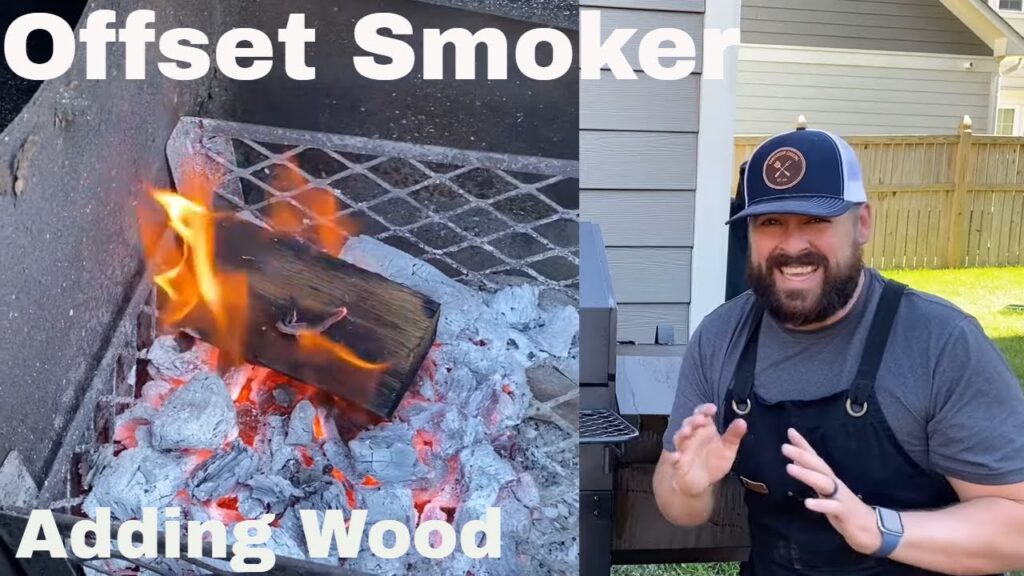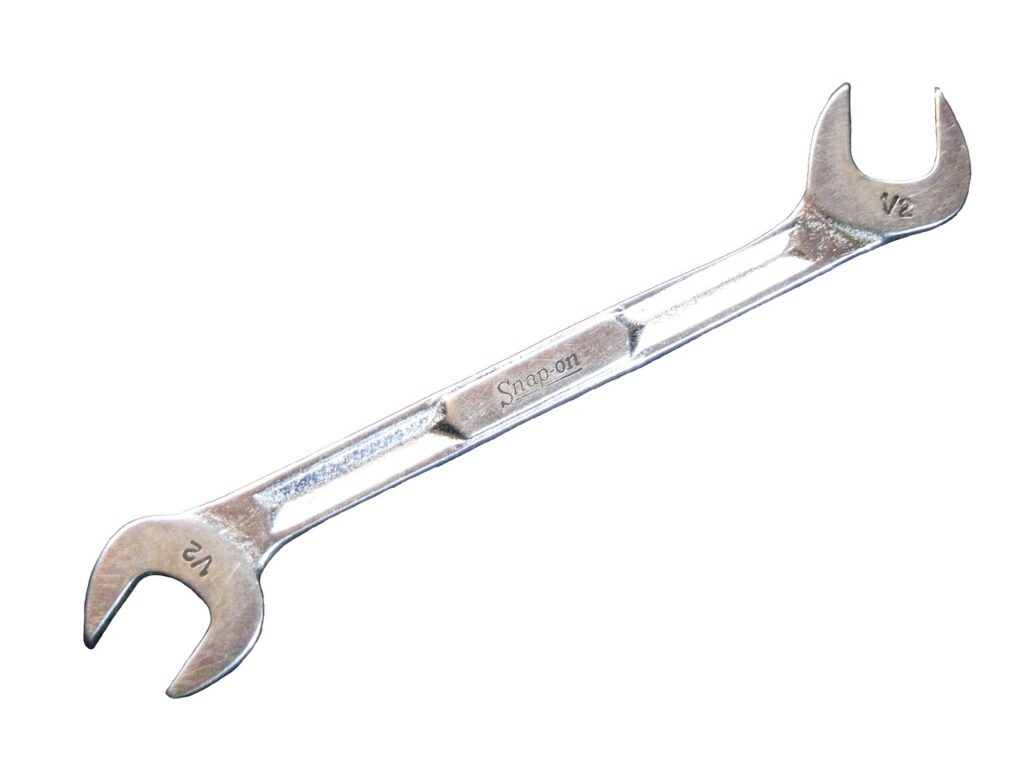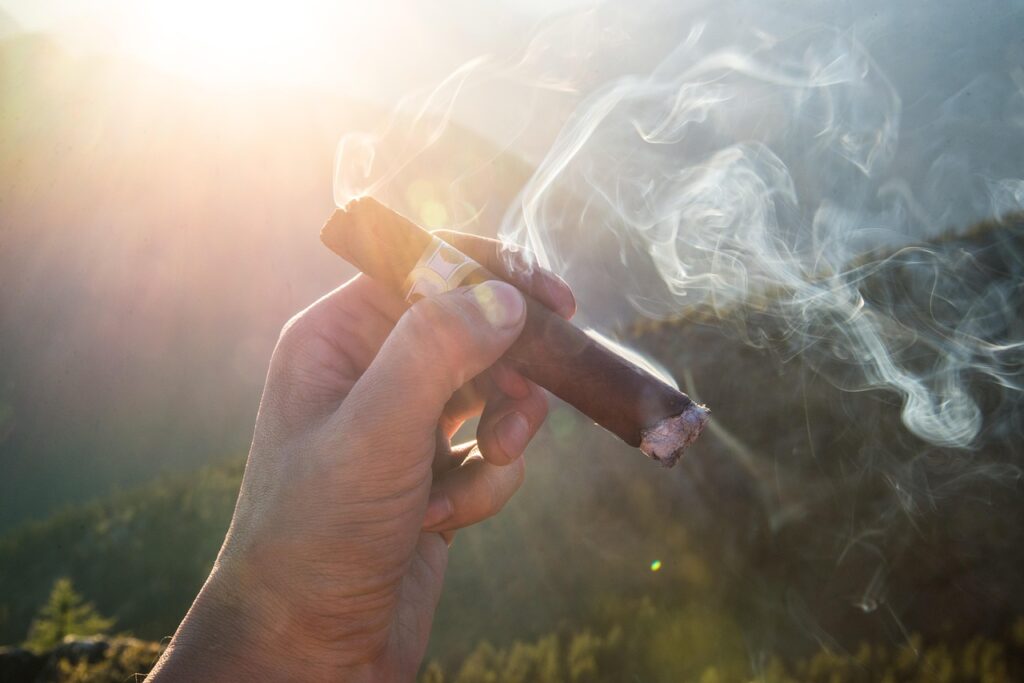This guide shows you how to add wood to your offset smoker during long cooks so you can maintain clean smoke, steady temperatures, and a reliable burn without choking the firebox. You’ll learn practical techniques to cut back on white, bitter smoke and keep your smoker performing predictably.
Inside, you’ll find step-by-step tips on wood selection and prepping, when and how to open the firebox, vent management, and safe feeding strategies, plus clear explanations of good versus bad smoke and routine maintenance. A short safety checklist and encouragement to practice the techniques will leave you confident to manage long cooks on your offset smoker.
Guide Purpose and Scope
This guide exists to help you add wood to an offset smoker throughout a cook in a way that protects flavor, controls temperature, and minimizes the smoky mistakes that stress new and intermediate pitmasters. You’ll learn practical, repeatable techniques for choosing wood, staging it, introducing it to the firebox, and using vents and the firebox door to keep combustion clean and predictable.
Why this guide matters for offset smoker owners
If you own an offset smoker, you know that maintaining steady heat and clean smoke can make or break the flavor of your food. Adding wood is one of the most frequent interventions you’ll make during a cook, and doing it poorly is a common source of thick white smoke, bitter soot, and temperature swings. This guide helps you understand why those problems happen and gives you clear, doable steps to avoid them.
Who this guide is for (beginners to intermediate)
You’ll find this useful whether you’re just getting comfortable with your first offset or you’ve cooked a few long smokes and want more consistency. The language and techniques assume you know the basics—how to light charcoal and that vents control airflow—but they don’t assume advanced experience. If you’re intermediate, you’ll still pick up refinements that reduce mistakes and improve flavor control.
What this outline covers and what it excludes (no recipes)
This article focuses strictly on firebox management: how offset smokers move heat and smoke, how to pick and prep wood, exactly when and how to add wood, vent and door techniques, and safety and maintenance. It intentionally excludes recipes, rubs, brines, or food preparation steps—those belong in a separate resource.
How to use the step-by-step sections during a real cook
Treat the step-by-step sections as field notes you can follow during a cook. Before you start, read the whole guide once so the reasoning makes sense, then print or keep the relevant steps handy while you’re at the smoker. Use the “when to add” cues (temperature trends and visual smoke cues) rather than rigid timers. Keep a simple log of times, wood amounts, and temperatures for a few cooks to learn your smoker’s recovery behavior.
Understanding Offset Smokers and Firebox Basics
How an offset smoker works: heat and smoke flow
An offset smoker uses a separate firebox attached to the cooking chamber. Heat and smoke from the burning fuel travel from the firebox into the cooking chamber, flow across the food, and exit through a chimney or exhaust vent. The path matters: the longer and more direct the flow across the food, the more consistent the heat and smoke exposure. You control the burn rate and smoke quality by managing fuel, air intake, and exhaust.
Parts to know: firebox, cooking chamber, vents, damper, grates
You should be familiar with the firebox (where you build the fire), the cooking chamber (where food sits), intake vents or dampers (which feed oxygen to the fire), the exhaust stack or chimney (which pulls air through), and the cooking grates. Each part plays a role when you add wood: the firebox is the only place you add wood, the vents determine how quickly that wood combusts, and the chimney helps pull smoke across the food.
How the firebox size and design affect wood-adding strategy
Large fireboxes let you add bigger logs less frequently; small fireboxes force you to add smaller pieces more often. A big firebox also means more thermal mass, so temperature recovery tends to be faster after an addition, but it can require more fuel per addition. Conversely, a compact firebox responds faster to oxygen spikes when you open the door, so a gentler, more conservative add technique is better. Know your firebox’s capacity and plan adds to match its behavior.
How smoke moves and why placement of wood matters
Smoke travels from the hottest part of the firebox and follows the airflow into the cooking chamber. Placing wood directly on hot coals causes rapid combustion and more immediate smoke; placing wood to the side or on the ends produces a slower, cooler burn with cleaner smoke onset. Strategic placement lets you manage the intensity of heat and smoke introduced when you add fuel.

This image is property of i.ytimg.com.
Key Concepts: Good Smoke vs Bad Smoke
Characteristics of good smoke (thin blue, barely visible)
Good smoke is thin, bluish, and barely visible. It smells sweet or neutral and doesn’t coat the food visibly. That thin blue smoke indicates efficient combustion and produces desirable smoky flavor without acridity. When you see it, you know the wood is burning well and your vents and temperature are in a healthy range.
Signs of bad smoke (thick white, acrid, sooty) and causes
Bad smoke is thick, white or grey, heavy, and can smell sharp, acrid, or sooty. It often leaves a black film on your food or soot in the cooking chamber. Common causes are wet wood, smoldering wood that is not reaching full combustion, insufficient oxygen, too-cool firebox temperatures, or introducing fresh wood in a way that chokes the fire. That smoke contributes bitter off-flavors.
How combustion quality relates to oxygen, fuel, and temperature
Combustion quality is a triangle: oxygen, fuel characteristics (size, moisture, type), and temperature. Too little oxygen or too much unburned fuel yields smoldering and white smoke. Too-cold temperatures prevent volatiles from burning cleanly. Conversely, adequate oxygen and a hot, stable bed of coals let wood volatiles combust completely, producing the thin blue smoke you want.
How to diagnose smoke problems quickly during a cook
If white smoke appears, first check wood moisture and the bed of coals—are there glowing coals or mostly unlit wood? Then check intake vents and chimney to ensure airflow isn’t restricted. Feel or monitor the firebox temperature; low temps often mean the wood is smoldering. If you see sudden thick smoke after opening the firebox, you likely introduced oxygen to smoldering fuel or added wood that’s too wet. Use these checks before making a corrective action like adjusting vents, repositioning coals, or removing wet wood.
Wood Selection: Species, Size, and Freshness
Common recommended woods for offset smokers and their flavors
Popular hardwoods include oak (balanced, medium smoke), hickory (strong, bacon-like), pecan (milder than hickory), cherry and apple (fruity, sweet), and maple (light, sweet). Mesquite is very strong and typically used sparingly. Choose wood that complements the protein and the intensity you want; milder woods are forgiving and often better for long cooks.
Choosing between logs, chunks, splits, and chips
Logs and splits are best for long cooks because they burn longer and more steadily. Chunks are convenient for staggered additions and middle-of-cook boosts. Chips burn quickly and are better used for short bursts of flavor or in combination with charcoal; they are not ideal for sustained smoke in full-size offset cooks. Match the fuel size to how often you want to add wood and how quickly you want it to ignite.
Why seasoned (dry) wood matters and how moisture affects smoke
Seasoned wood—dried to below roughly 20% moisture—burns cleanly and produces thin blue smoke. Wet or green wood produces thick white smoke and a lot of creosote, which leads to bitter, sooty flavors and excessive buildup in your smoker. Use a moisture meter when possible, or look for signs like cracks in the end grain, lighter weight, and a hollow sound when two pieces are knocked together.
Avoiding treated, painted, or resinous woods and harmful sources
Never burn treated, painted, or otherwise contaminated wood. Avoid woods with heavy resin like some softwoods (pine, fir) for long cooks because they can spit sap and produce unpleasant flavors. Also avoid driftwood, pallet wood, or lumber from unknown sources—chemicals and contaminants can vaporize during burning and ruin your food and health.

This image is property of pixabay.com.
Prepping Your Wood and Coals Before Adding
How to split, size, and arrange wood for efficient burn
Split logs encourage quicker ignition because they expose more surface area and dry faster. For frequent, controlled adds, prepare chunks or splits roughly 2–6 inches across depending on firebox size. Arrange pieces so smaller ones are available for ignition and larger ones for sustaining heat. Prepare a variety of sizes so you can adapt during the cook.
How to check and reduce wood moisture: tools and visual checks
A handheld moisture meter gives the fastest reading; seasoned firewood should be under about 20% moisture. Visually, seasoned wood has visible cracks at the ends, grayish surface color, and is lighter in weight. If wood is damp, let it air dry under cover for weeks or split it to speed drying. Do not rely on quick methods like microwaving—plan ahead and store wood properly.
Preheating coals and building a stable bed before adding wood
Start by building a stable bed of hot coals from lump charcoal or briquettes. Let the coals fully ash over and glow evenly; this stable, high-temperature base is vital for cleanly igniting added wood. If you add wood to an immature or uneven coal bed, it will smolder and create bad smoke. Preheat until a consistent coal bed is established before your first wood additions.
Staging wood near the firebox for safe, quick additions
Stage your pre-split wood within arm’s reach but at a safe distance from heat and sparks. Keep a covered, dry stack nearby so you can quickly and safely open the firebox, add wood, and close it again with minimal exposure. Use tools like long-handled tongs or heatproof gloves for handling, and maintain a tidy staging area to prevent trips and accidental contact with the hot smoker.
Step-by-Step: Adding Wood Throughout Your Cook
When to add wood based on temp trends and visual cues
Add wood when you see temperature drop trends or when thin blue smoke is diminishing. A typical cue is when the cooking chamber temp begins to fall and your existing coals are no longer glowing strongly. Visual cues include fewer orange embers and a cooling firebox. Avoid adding on a strict timer; instead, watch temp and combustion behavior.
How much wood to add at one time for short, medium, and long cooks
For short cooks (under 2 hours), add small chunks or a couple of splits to maintain a brisk fire. For medium cooks (2–6 hours), add moderate-sized splits or multiple chunks at staggered intervals. For long cooks (6+ hours), plan larger logs or multiple staged pieces so you raise the bed once or twice instead of frequent small stirring. Adjust quantities based on your smoker’s size and how quickly it recovers.
Placing wood on coals vs. off to the side — pros and cons
Placing wood directly on hot coals produces quick ignition and more immediate heat and smoke, which is good when you need rapid recovery. The downside is a sudden temperature spike and a higher risk of brief white smoke if the wood has surface volatiles. Placing wood to the side gives a slower, cleaner burn with gentler heat addition—better for steady-state cooking. Use direct placement for recovery and side placement for controlled smoke.
How to monitor recovery time and adjust subsequent additions
After adding wood, monitor how long it takes for the cooking chamber to recover to your set temp. If recovery is quick and steady, maintain your cadence; if recovery is slow, either increase the amount or adjust intake vents to add oxygen. Record recovery times across cooks so you learn your smoker’s rhythm: how many minutes per ounce/size of wood to recover by X degrees.

This image is property of pixabay.com.
Methods for Adding Wood: Techniques and Variations
Single big log vs staggered chunks: timing and heat profiles
A single big log gives long, relatively stable heat but slower initial ignition and a longer recovery should you overshoot or extinguish. Staggered chunks provide more control and allow you to shape the temperature curve with smaller interventions. Use a big log for overnight or very long smokes where you want less frequent attention; use chunks for active cooks where you can respond to temperature trends.
Using splits or coal-sized pieces for faster ignition
Smaller splits and coal-sized pieces ignite faster and are useful for quick top-offs or when you need an immediate response. They produce less volatile-intensive smoke if preheated by the coal bed and they integrate quickly, minimizing smolder. Keep a supply of smaller pieces for moment-to-moment control.
Timed-add method (regular intervals) vs. reactive-add method (as needed)
Timed-add methods work if your smoker and ambient conditions are consistent; they let you plan and walk away for short periods. Reactive-add methods respond to actual temperature and smoke cues and are more precise but require more attention. Many successful cooks blend the two: use timed adds early to establish rhythm, then switch to reactive adds as you fine-tune.
Using a top-off approach late in the cook for steady smoke
Late in the cook, especially during finish or when the meat is near target temps, use small top-off pieces to maintain thin blue smoke without changing heat dramatically. This keeps flavor going without over-smoking. Top-offs are typically placed off to the side and allowed to smolder gently into the coal bed for a steady, unobtrusive smoke.
Firebox Door and Opening Best Practices
When to open the firebox door and when to leave it closed
Open the firebox only when necessary: to add fuel, reposition coals, or check the bed. Each opening lets in a rush of oxygen and can cause a temporary spike in combustion and draft. If your fire is stable and you only need to view temps, use chamber thermometers or probe ports instead of opening the door.
How to open and close to minimize oxygen spikes and white smoke
When you must open the door, do it quickly and deliberately. Reach in with your prepared wood and add it in a single, smooth motion, then close the door immediately. Avoid prolonged open door intervals that let cool air in and disrupt combustion. Slowly opening partially can also help; a brief crack allows you to slide wood in without a full-pressure change.
Quick-add technique to limit heat and smoke loss
The quick-add technique is: prepare the wood and tools, crack the firebox door briefly, slide the wood into place using tongs, and close the door immediately. Keep your hand and face back from the opening, use gloves, and practice the motion once cold so you’re efficient when hot. This reduces heat, smoke, and oxygen spikes that lead to white smoke.
Using the door to reposition coals safely and when to rake vs poke
If coals need repositioning, use long tools to rake and shift them to form an even bed before adding wood. Raking creates a surface of glowing coals for cleaner ignition; poking may be used sparingly to expose embers but can scatter ash and create inconsistent combustion. Do this when the firebox is hot enough that movement will encourage a quick reburn, and always use tools and gloves rated for the heat.

This image is property of pixabay.com.
Vent Control and Temperature Management
How intake and exhaust vents affect combustion and smoke quality
Intake vents control how much oxygen reaches the fire; more intake means more oxygen, a hotter fire, and faster consumption of fuel. The exhaust stack creates draft, pulling smoke and heat across the cooking chamber. Balanced vent settings are crucial: too little intake chokes the fire and creates white smoke; too much can overfire and create harsh smoke flavors or burn off desirable combustion volatiles.
Setting vents for different phases: start, steady-state, finish
At start, open vents wider to build a strong coal bed and encourage rapid ignition. During steady-state smoking, reduce intake to maintain a consistent temperature and thin blue smoke. For the finish, you can slightly increase vents to raise temps if you need a recovery or to help render fat, or reduce them for a slower, cooler finish. Make small adjustments and wait for the system to respond.
How to read temps and correlate with wood-adding cadence
Use a reliable chamber thermometer and probe thermometers for food temps. If chamber temp drops by more than your acceptable variance (often 10–20°F), it’s a cue to add wood or open vents slightly. Track how much an expected addition raises the temp over a consistent recovery window; that gives you a predictable cadence for future cooks.
Adjusting vents after adding wood to speed recovery or tame heat
After adding wood, if you need faster recovery, open the intake a touch to feed oxygen. If the smoke looks too intense or the temp spikes, partially close the intake and/or open the exhaust to increase draft and pull heat through. Make incremental vent changes and allow 5–10 minutes to see the effect before changing again.
Conclusion
Recap of core techniques for adding wood safely and effectively
To summarize, build a strong coal bed, use seasoned hardwoods in sizes that match your firebox, stage wood for quick access, add wood by matching placement (on coals for recovery, off to the side for steady smoke), use quick-add door technique to minimize oxygen spikes, and control vents to balance combustion. Watch smoke color—aim for thin blue smoke—and use temperature trends to guide adds.
Encouragement to practice, keep records, and iterate with confidence
You’ll get better each cook. Keep a simple log of wood sizes, amounts, placement, vent settings, and recovery times for a few cooks and you’ll quickly learn your smoker’s personality. Practice builds confidence and reduces the stress that leads to overreacting and bad smoke.
Key safety and maintenance reminders to protect equipment and flavor
Always handle hot wood and tools with heatproof gloves and long-handled tongs. Keep staged wood clear of the smoker’s hot surfaces and have a safe area to set tools. Clean ash regularly to maintain airflow, inspect gaskets and seals, and avoid burning treated or contaminated wood. Proper maintenance preserves flavor and extends the life of your smoker.
Next steps: try the checklists and join community groups for feedback
Try the techniques and keep notes on what works in your conditions. Share your experiences with smoker owner communities for feedback and solutions tailored to your model and local climate. With persistence and attention to the cues in this guide, you’ll reduce white smoke, maintain steady temperatures, and produce cleaner, better-flavored barbecue.
